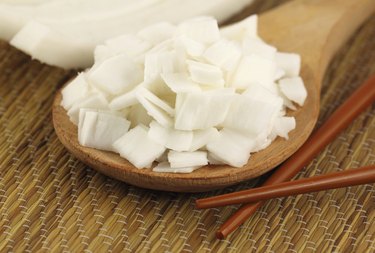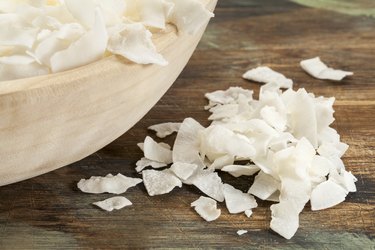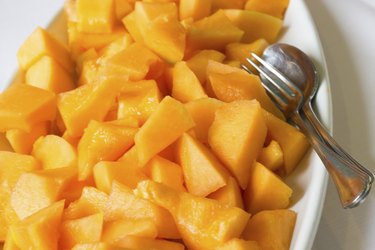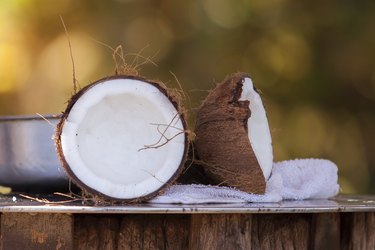
One out of every 10 Americans over 40 has diverticulosis, a chronic digestive disorder that creates small pouches, or diverticula, in the lining of the colon, or large intestine. If these pouches become inflamed, this acute attack is known as diverticulitis. Your health care provider will advise you to follow specific diets for different phases of your diverticular disease. Some of these diets include coconut, while others exclude coconut products. Coconut, especially shredded, may cause irritation if you have diverticulitis.
Fiber in Coconut
Video of the Day

Fiber refers to the parts of vegetables, fruits, grains and other plant products that your body can't digest. A single ounce of dried, sweetened, shredded packaged coconut has almost 3 grams of fiber. Continuum Health Partners lists dried or fresh coconut as one of the top 20 foods to include in a high-fiber diet.
Video of the Day
Misconceptions About Diverticulitis

Doctors often recommend that people with diverticular disease avoid nuts, popcorn and seeds, believing that these small pieces of high-fiber foods could obstruct or irritate the diverticula. However, there is no scientific evidence to back up this recommendation. You do not need to eliminate specific foods from your diverticulosis diet, says the National Institute of Diabetes and Digestive and Kidney Diseases. During an attack of diverticulitis, however, your diet will be more restricted.
Diet Recommendations

Your body needs both fiber and fluid to produce soft-formed stools that move readily through your intestinal tract and out of your body. When you don't eat enough fiber, you might need to strain to pass hard stools. This effect increases the formation of new diverticula and can irritate those that already have formed. If you experience the abdominal pain, nausea, vomiting, changes in bowel habits, fever and chills associated with diverticulitis, change to a clear liquid diet for two to three days to allow your colon to rest. Once your symptoms improve, begin adding low-fiber foods. Fiber should be added to your diet gradually in order to prevent intestinal discomfort, advises MedlinePlus.com.
Points to Consider

A clear liquid diet consists of most fluids you can see through, as well as foods that melt to form clear liquids at room temperature. You can eat some soft fruits and vegetables with no seeds or skins when you're sticking with low-fiber foods. While coconut fits well into a high-fiber diet, it is forbidden on both clear liquid and low-fiber diets.
Use Coconut Sparingly

Although coconut is fiber-rich, it's also packed with plenty of fat. One ounce of packaged coconut has almost 8 grams of fat, with unhealthy saturated fat making up about 7.5 of those grams. When your diverticulosis is under control, you can use coconut sparingly as a garnish.
Is this an emergency? If you are experiencing serious medical symptoms, please see the National Library of Medicine’s list of signs you need emergency medical attention or call 911.